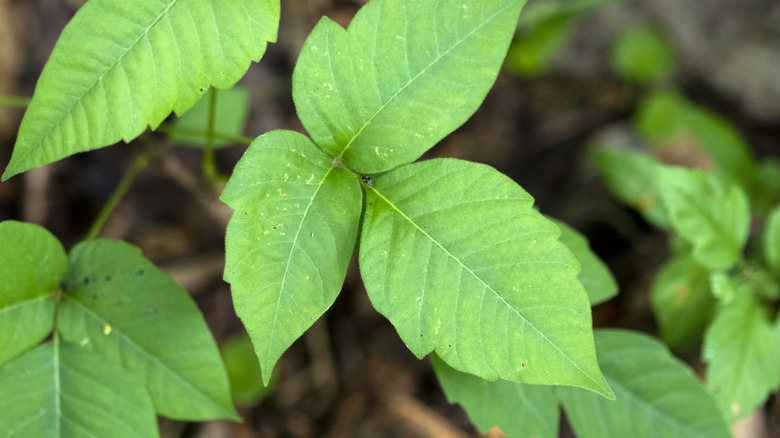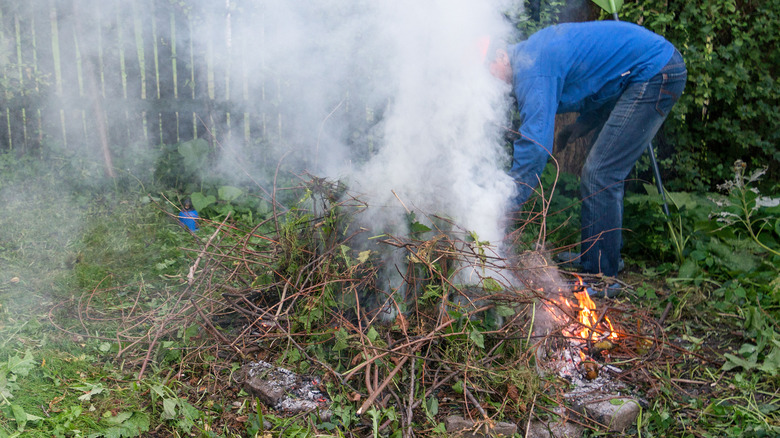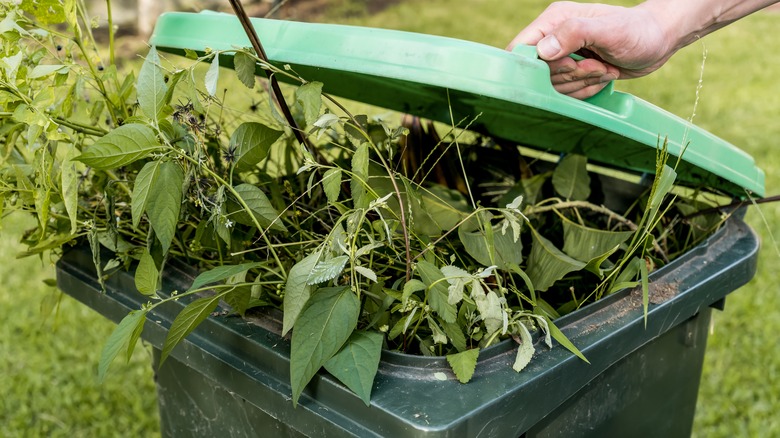Dangerous Mistakes To Avoid When Dealing With Poison Ivy In Your Lawn
While birds and deer gladly flock to poison ivy (Toxicodendron radicans) to gorge on its white berries, the sight of this plant is enough to stop most people in their tracks. The itchy, blistery feeling is all too familiar, afflicting at least 85% of Americans who touch poison ivy and the closely related poison oak and sumac, per the American Skin Association.
Yet following a hands-off approach isn't enough to dodge the painful hives — you must also avoid burning poison ivy to get rid of it, as its poisonous fumes can inflict your body with respiratory issues and red rashes. And if you've been cutting down the pesky weed with a mower and emptying the contents in a compost pile, it's time to put an end to this practice too, as the plant might find a way back into your lawn. Instead, kill poison ivy using a DIY vinegar solution or herbicides and then send it to the landfill.
An airborne toxin
Poison ivy is toxic through and through — barring the inner wood and pollen. Its roots, branches, berries, leaves, and vines are steeped in urushiol oil, a light yellow or colorless substance irritating skin on contact. When the invasive growth is burnt, its air-borne ashes retain the sticky, poisonous oil and enter the breathing pathways, lining the nose, throat, and lung membranes. This may induce anaphylaxis, an allergic reaction involving hives, swelling, and shortness of breath. Coughing, throat burning, and eye irritation are common as well. However, the most common outcome involves unprotected body parts breaking out in agonizing external rashes, along with mouth blisters. The more sensitive people may turn feverish, requiring a physician's assistance if their body temperature goes over 100 degrees Fahrenheit.
To avoid contracting allergies and respiratory issues, avoid burning poison ivy piles, especially considering their urushiol oil content is increasing manifold because of higher carbon emissions, warns Climate Central. But if there's no way around it, consider wearing a NIOSH-certified particulate respirator (R–95/P–95), as the CDC recommends.
A hard-to-kill weed
While you might think that a dead weed's poisonous sap dies with its demise, it can actually thrive in dead foliage for up to five years. However, it does decompose over time, with some believing it weakens quicker in hot and clammy climates. But Cindy Salter said adding them to the mulch isn't the best idea because DIY manures aren't subjected to high enough temperatures, aeration, and turning as is common in factory settings (via the National Institute of Food and Agriculture). Not to mention you have to chop down the sturdy dead branches and risk the further spread of the malicious resin sap.
Moreover, given the perennial weed's persistence, it's possible for the ivy to begin propagating and rooting through its seeds or rhizomes when the compost returns to the lawn. So to prevent the insidious invader from establishing itself, double-wrap it in trash bags and dispose of it after spreading leaves over the extracted area. You can also bury it deep into the ground if the spot experiences limited traffic.


